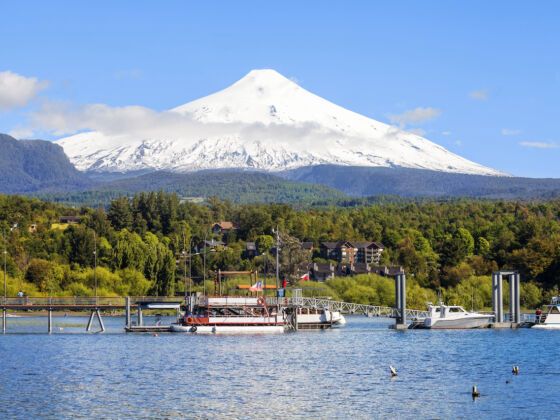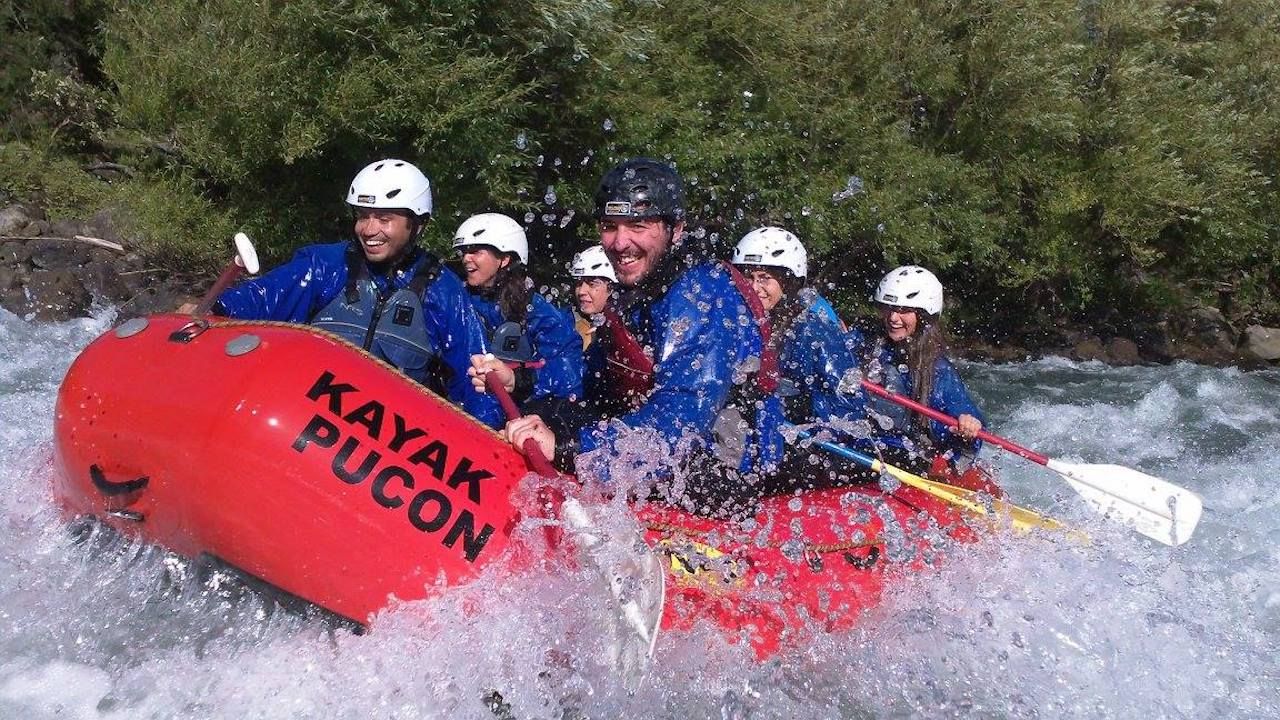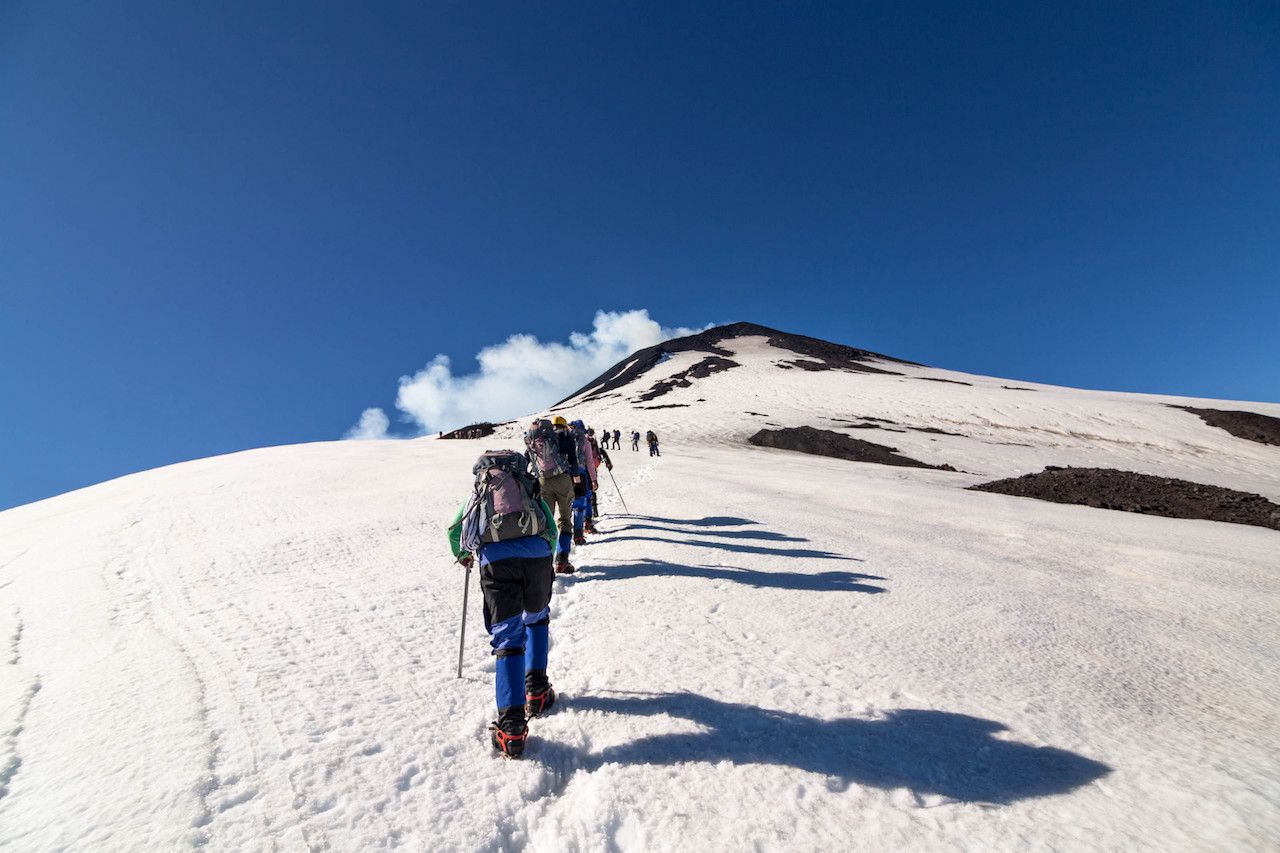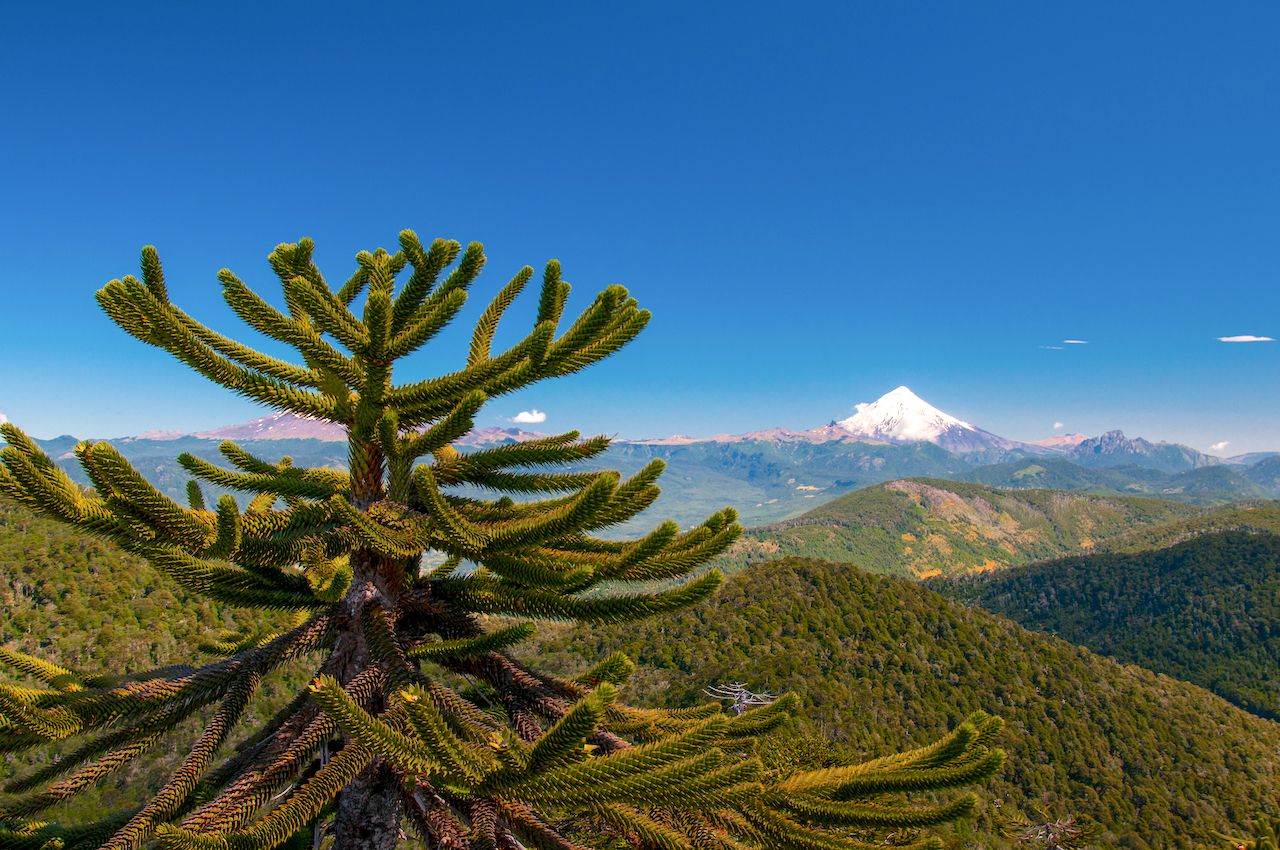Nearly 500 miles south of the Chilean capital Santiago lies the Lake District town of Pucón. Dramatic Andean peaks abound here, the most notable among them being the Volcán Villarrica, an active volcano that seems both to guard over Pucón and threaten it. In front of Pucón lies a lake of the same name, the Lago Villarrica. Its tranquility belies not only the dangers of one of Chile’s most active volcanoes but of the raging water which pours into it from the Trancura River. While the lower part of the Trancura offers easy-to-navigate rapids suitable for families or those seeking a more sedate experience, the upper river is a bit more… splashy.


Despite the Fiery Volcano and Roaring Rapids, Pucón, Chile, Is Totally Chill
River rafting in Pucón, Chile

Photo: Kayak Pucon/Facebook
For anyone like me seeking to infuse some adrenaline into their Chile travel experience, the good news is that Pucón is full of operators offering rafting trips on Trancura’s speedier stretches. This means that some excellent prices can be had. Sierra Nevada Aventura was my operator of choice and transported me, some other intrepid tourists, and a few sturdy inflatable rafts to the wilder upper part of the river.
I wanted splashy, and splashy I got. This part of the Trancura is far from calm; having rafted on rivers worldwide, I was pleased to see that this one had some fun Grade IV rapids. This meant that there were huge waves, stomach-churning drops, and a fair chance of falling out. But, as ever, this was a very controlled, relatively safe adventure and we all managed to stay in the boat even when plunging down a 10-foot waterfall.
Pucón lies in the western foothills of the glacier-capped Andes Mountains, the range of volcanoes that stretch across South America and which divide Chile from Argentina. Fed by the snow from these volcanic peaks, the waters of the Trancura are certainly cool, even if less chilly than many other rivers I’ve rafted. Nevertheless, the first wave that crashed over the raft made me grateful for the wetsuit provided by the rafting company.
I also felt grateful for the fact that this glacier-fed river, free from pollution and very far from any big cities, was clean — given that many more crashing waves resulted in me getting mouthfuls of that cool water. But I only have myself to blame, having enthusiastically asked to sit at the front of the raft. Sitting further back tends to mean you don’t get a face full of river when traversing a rapid.
With all that aquatic excitement, it could be easy to ignore the scenery. But there are enough pauses in the drama to take in views of the forest, as well as of the 9,380-foot Villarrica volcano, pumping out smoke from its snowy summit in the distance. At one point it’s necessary to walk around one particularly rough set of rapids, which proves a good excuse to peer down at the white water rushing below.
If you get to the end of the rafting trip and feel you haven’t got wet enough, the guides tend to encourage you to jump overboard and float down the last dozen yards of smooth water. It’s a serene end to an action-packed couple of hours.
The best hiking in Pucón, starting with the volcano

Photo: Macca Sherifi/Shutterstock
There are myriad ways to get your pulse racing around Pucón. In addition to all those operators in town offering rafting trips, many will also take you to Villarrica Volcano to hike up, or even ski down. You’ll be hiking over snow until you get near the caldera, where the heat of this active volcano has melted away the ice.
Those on tighter budgets can hop on a Caburgua bus to Huerquehue National Park, where there are walks with views for many miles around over forests, waterfalls, and that hard-to-miss, immense volcano. The bus deposits you at the office of the park’s CONAF, Chile’s non-profit National Forest Corporation; there, after you’ve paid a small sum to enter, you can begin your hike. Wide gravel paths wind steadily up through thick forests of deciduous and evergreen trees, until you arrive at the top, to find remote mountain lakes in which you can swim and cool off.
The trails in this park are few and well-marked, although I would recommend taking a map so that you can at least tell how far along a hike you are (and therefore not miss one of the few buses back to town). It’s hard to get lost, but there are no short hikes; you’ll want to at least bring some water with you. The park is also famed for its Araucaria trees, also known as monkey puzzle trees. Despite their playful appearance, these trees can live up to 3000 years.

Photo: NiarKrad/Shutterstock
Another good day-hike from Pucón, and another place to spot the famed Araucaria trees, is in the Cañi Nature Reserve. Reaching the mirador, or lookout point, at the over-5000-foot summit of this reserve is a challenge, but when you get to the top you’ll have a good view of four distant volcanoes, as well as dozens of lakes. Again, you’ll need to pay a small fee at the entrance, but, with public buses from Pucón to Huife stopping here, this is yet another low-cost and popular hiking option. With its Araucaria forest, and occasional sightings of puma and condor, it’s no surprise that Cañi is a world-renowned nature reserve.
As you may be beginning to realize, Pucón has a long list of activities to keep visitors occupied – certainly plenty to fill a couple of weeks there – and it’s a worthy rival to other top Chile travel destinations. As elsewhere in the country, horse riding is very popular here; and a particularly nice option is a 3.5-hour ride along rivers and through forests, stopping somewhere scenic for lunch. Mountain biking has become increasingly popular, with options to tear downhill, or to pedal around volcanoes and along dedicated trails. Afterwards, the Termas Geométricas hot springs will soothe any aches you may have sustained. And then, of course, there’s the lake.
During my time in Pucón I spent many hours swimming in the cool, perfectly clear water of Lake Villarrica, then drying off on the beach. This is most pleasant in the summer months of January and February, when temperatures reach around 70°F. From the beach you can also either take to the air parasailing or take to the water in a hired kayak or motorboat.
In those balmy summer months, an inflatable activity park floats just off the beach. This is perfect for families with children a little too young for arduous hikes or even the quieter, Grade III rapids of the Trancura River.
Where to eat in Pucón, including lemon meringue pie

Photo: Brester Irina/Shutterstock
The fast-paced action on the river, and leg-challenging trails of the parks, contrast with the serenity of Pucón itself. Not even the regular tests of the volcano warning alarm can disturb the easy nature of this town, which receives up to 10 hours of daily sunshine during its summer months of December to March.
There are plenty of hostels in town, including the well-rated, perfectly positioned Chili Kiwi Lakefront. The Villarrica Park Lake and Antumalal hotels are also on the lake, and considerably more luxurious. There is accommodation here to suit all budgets and tastes, but be sure to book well in advance of those busy summer months.
Perhaps my other favorite thing about Pucón, apart from the top-quality river rafting and hiking opportunities, is the prevalence of restaurants and cafes with on-the-street seating and serving a wide range of cuisines, including generous portions of lemon meringue pie. For some happy reason this is a popular dish in Chile, and the ones served in Pucón tower with delicious lemon curd and meringue. If you walk along Lincoyán, just off the main street of Bernardo O’Higgins, you’ll find a range of excellent cafes, including my favorite, Oma’s Café.
Full of Trancura water and pie, what better way to round off the perfect Pucón day than to wander back to that sublime beach, and watch wavelets gently hush against the black sand shore. At sunset, locals and travelers — most of them from Chile — come out to marvel at the colors of the sky reflected against the lake itself. And there, always keeping watch, is the hard-to-miss Villarrica volcano, the snows of which get bathed in the golden glow of day’s end.